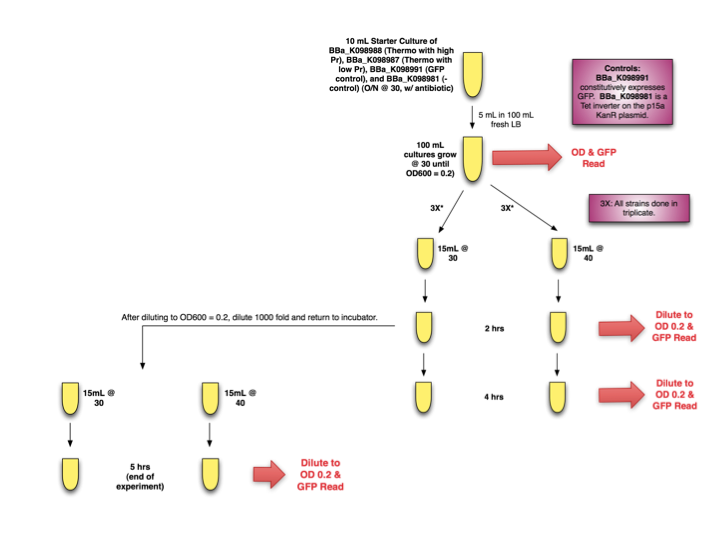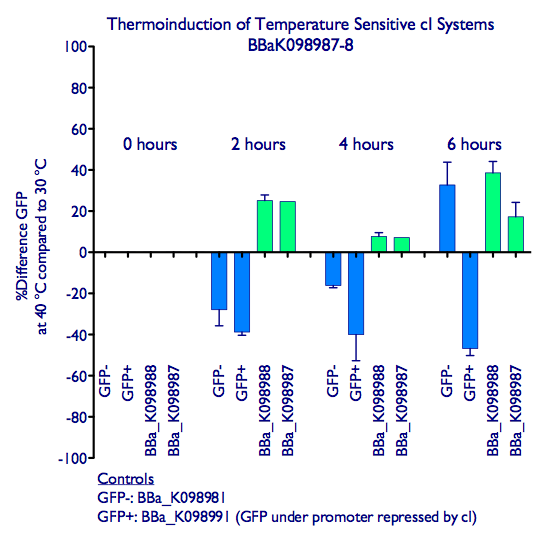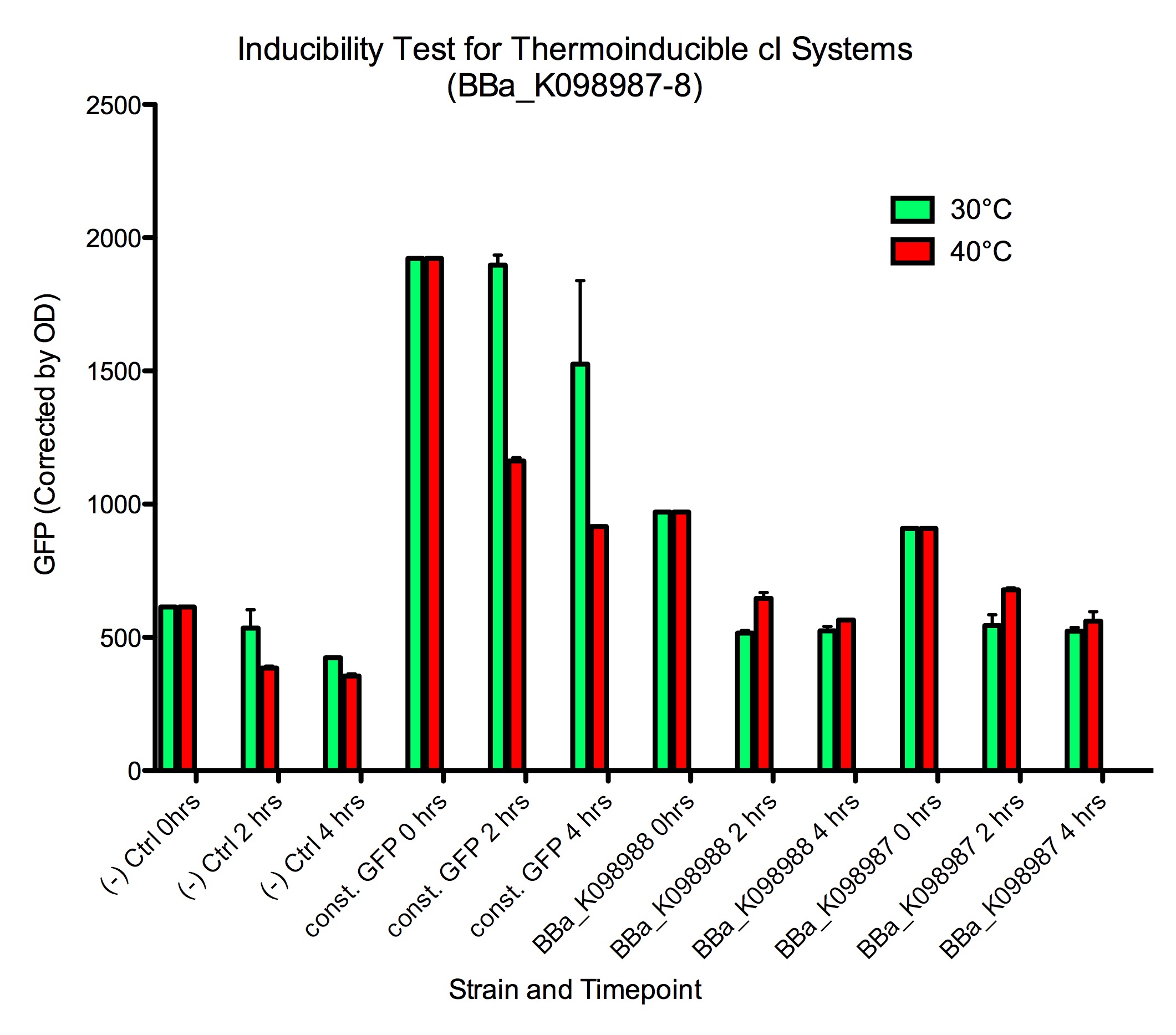Team:Harvard/Parts/Tempsenseci
From 2008.igem.org
(→Results) |
(→Results) |
||
| Line 82: | Line 82: | ||
===Results=== | ===Results=== | ||
Induction of GFP expression was observed at both 2 and 4 hours after moving samples to 40 ºC. While levels of GFP expression in the GFP+ control ([http://partsregistry.org/wiki/index.php?title=Part:BBa_K098991| BBa_K098991]) went down in the samples at 40 ºC, levels in the inducible systems increased slightly. Note that the ''absolute levels'' of GFP expression do not increase much relative to 30 ºC (see our raw data at at the bottom of the page), but the increase in GFP expression is significantly different behavior from the decrease observed in the GFP+ control. We hypothesize that elevated temperature affects the GFP expression (e.g. by disrupting protein folding), and that even the small increase in GFP expression with our systems indicates effective induction. However, this does suggest that such a system is not optimal for inducing the expressing of heat-sensitive proteins. | Induction of GFP expression was observed at both 2 and 4 hours after moving samples to 40 ºC. While levels of GFP expression in the GFP+ control ([http://partsregistry.org/wiki/index.php?title=Part:BBa_K098991| BBa_K098991]) went down in the samples at 40 ºC, levels in the inducible systems increased slightly. Note that the ''absolute levels'' of GFP expression do not increase much relative to 30 ºC (see our raw data at at the bottom of the page), but the increase in GFP expression is significantly different behavior from the decrease observed in the GFP+ control. We hypothesize that elevated temperature affects the GFP expression (e.g. by disrupting protein folding), and that even the small increase in GFP expression with our systems indicates effective induction. However, this does suggest that such a system is not optimal for inducing the expressing of heat-sensitive proteins. | ||
| - | |||
| - | |||
<div style="text-indent:0pt;color:black">[[Image:CIts.png|780px|thumb|center|A comparison of GFP expression following thermoinduction of cells harboring BBa_K098987, BBa_K098988, a constitutive GFP generator (GFP+ control), and a plasmid not encoding GFP (GFP- control).]]</div> | <div style="text-indent:0pt;color:black">[[Image:CIts.png|780px|thumb|center|A comparison of GFP expression following thermoinduction of cells harboring BBa_K098987, BBa_K098988, a constitutive GFP generator (GFP+ control), and a plasmid not encoding GFP (GFP- control).]]</div> | ||
Revision as of 01:49, 30 October 2008
|
|
 "
"







